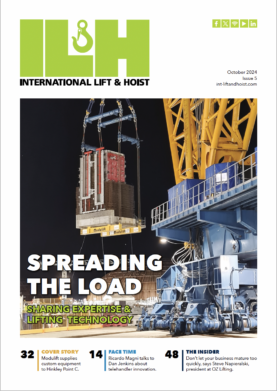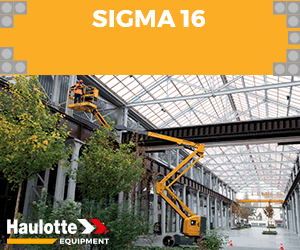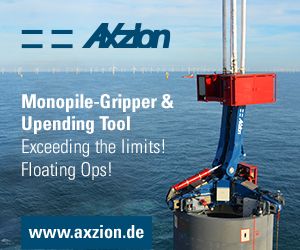Atlas Industrial Rebuilds Damaged Generator
At its Annual Conference, the Specialized Carriers & Rigging Association (SC&RA) announced the winners of the Rigging Job of the Year Awards. Atlas Industrial Contractors, Columbus, Ohio, won in the Jobs Between $150,000 and $750,000 category for rebuilding a damaged power generator.
In January 2011, at the peak of the winter lighting and heating season in Ohio, a generator at FirstEnergy Corporation’s Sammis Station threw its rotor. National Electric Coil (NEC) was dispatched to perform the emergency repairs. NEC in turn called Atlas Industrial Contractors to assist in the tedious job of rebuilding the damaged generator.
The main obstacle in the repair process was the 835-megawatt generator’s location astraddle two building bays with structural steel obstructions directly overhead. NEC’s method for repairing the generator was to upend the stator housing. But due to the overhead obstructions, the stator housing would have to be relocated before upending could occur.
As NEC and Atlas prepared their safety, lifting and repair plan, FirstEnergy was anxious about potential damage to the stator housing and turbine pedestal. Generator OEM Siemens was also concerned that the end bell might deform during the lift or while resting on the foundation during the core installation, irreparably damaging the generator.
Atlas turned to Ruby and Associates of Farmington Hills, Mich. to perform a finite element analysis of the stator housing and the lift plans. It was determined that reinforcing plates should be temporarily installed on the stator housing during the rebuild. In addition, support stands were designed to distribute some of the weight of the stator to the lower lift trunnions.
By mid-February all specialized components had been fabricated, a 1,000-ton gantry system procured from Rigging Gear Sales installed and the stator ready to be relocated and rotated. In preparation, the rotor was removed from the stator housing, decoupling the generator from the turbine. NEC also removed the existing core, which was comprised of some 750,000 individual laminate plates that weighed 400,000 pounds. Given the reduced weight of the empty stator, this was the easier part of the move. Fully assembled, the generator weighed 400 tons, and the plan and the engineering had to account for this.
Atlas employed a Lift Systems 34PT10060WTIC 1,000-ton gantry system with a height elevation of 40 feet. Atlas also used two legs of its 34PT5400WT 500-ton gantry connected to Atlas’ tailing fixture to act as the tailing gantry during the lift process. Eighty feet of 30-inch track and 30 feet of 15-and-a-half-inch track were deployed to support and direct the rolling gantries.
With the gantries and tracks in position, the reinforcing plates on the side of the stator were installed and four lifting trunnions were mounted on the stator housing. Engineers determined that high friction forces would have to be overcome during the uprighting or there was a chance that the stator and lift system would lurch unpredictably during rotation. In response, an ultra-low friction bearing was incorporated into the lift links. The lift links, lift trunnions and other specialty components were fabricated by Atlas Steel. The lift links fit snugly over the upper trunnions and assured a smooth up righting process and kept the assembly in a plumb condition.
For the stands to share load with the end bell of the stator as it increased in weight due to reinstallation of the laminate plates, shims were installed under the stands at a critical point in the restacking process. Shims were also employed under the steel grillage supporting the stator end bell to provide uniform contact of the stator bell against the steel.
The Atlas team submitted pre-task planning and job hazard analysis to both NEC and FirstEnergy. All project personnel attended FirstEnergy’s site-specific safety orientations. Atlas conducted its own full-scale safety orientation, including comprehensive schooling all team members and conducting walk-throughs of all phases of the project. A series of test lifts were also performed.
With the tailing fixture in place, the generator was moved away from the turbine in a series of coordinated vertical lifts and horizontal gantry movements to keep the stator and attached piping clear of the turbine and generator foundations and to maintain clearance with overhead obstructions. As the tip-up operation began by raising the 1,000-ton gantry system at the turbine end of the stator, the 500-ton system was used to synchronize with the movement of the 1,000-ton system during rotation of the stator. Pre-planned hold points were built into the lifting schedule to ensure all axis’ of the stator and gantry systems were within allowable tolerances.
Once vertical, the stator housing was moved to the far west end of the gantry tracks. At this point, support steel grillage beams were positioned and the lower trunnion support stands moved into place.
Atlas crews left while the rotor was repaired and NEC began restacking the core, which took about three months. During restacking, Atlas crews returned once to install shims beneath the support stands to support the additional weight added during restacking. With the rotor and laminate plates reinstalled, the stator weight was back to its original 400 tons.
After the restacking of the laminates was complete, it was time to return the unit to horizontal and remarry it to the turbine and exciter. Gantry lifting pressures and the tractive effort to overcome rolling resistance would be markedly different this time since the stator was twice as heavy. With the stator clear of the support stands, the generator was repositioned through a series of coordinated vertical lifts and horizontal gantry movements.











